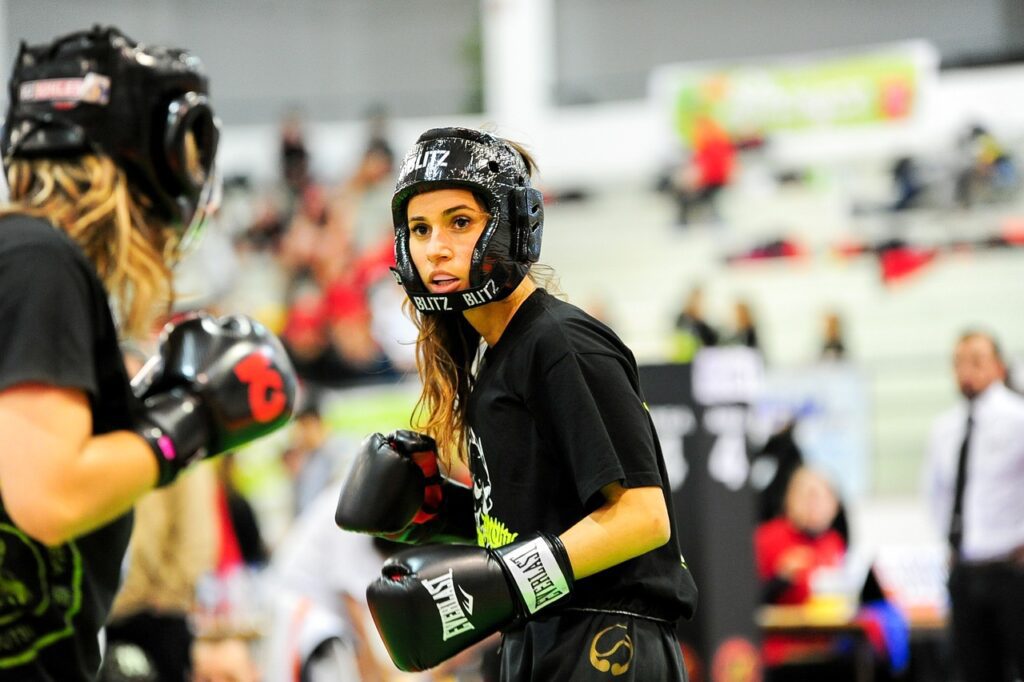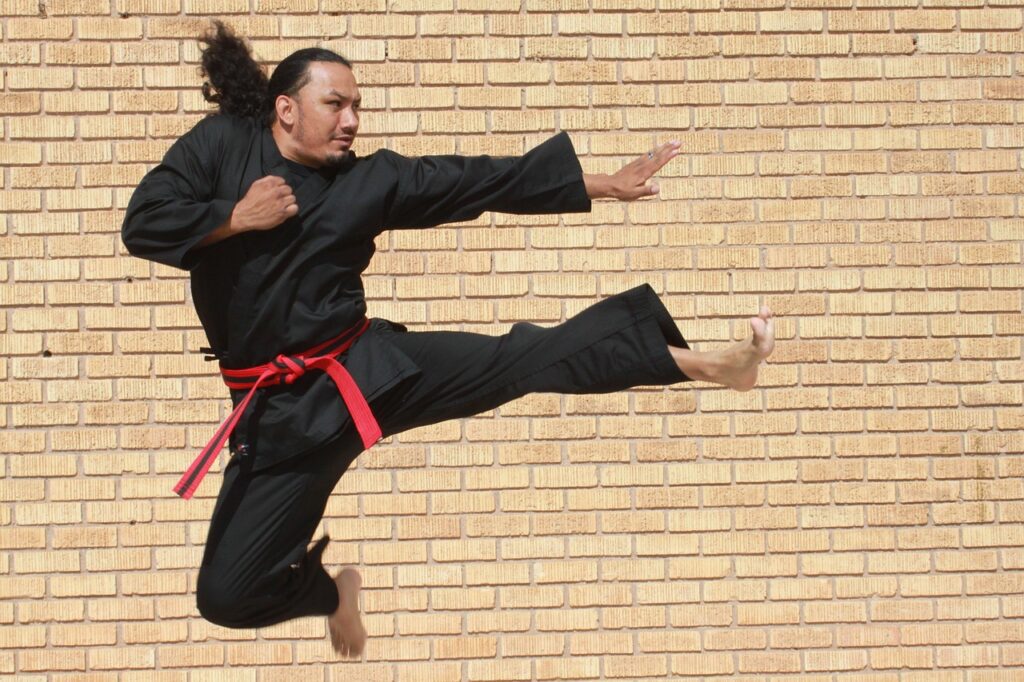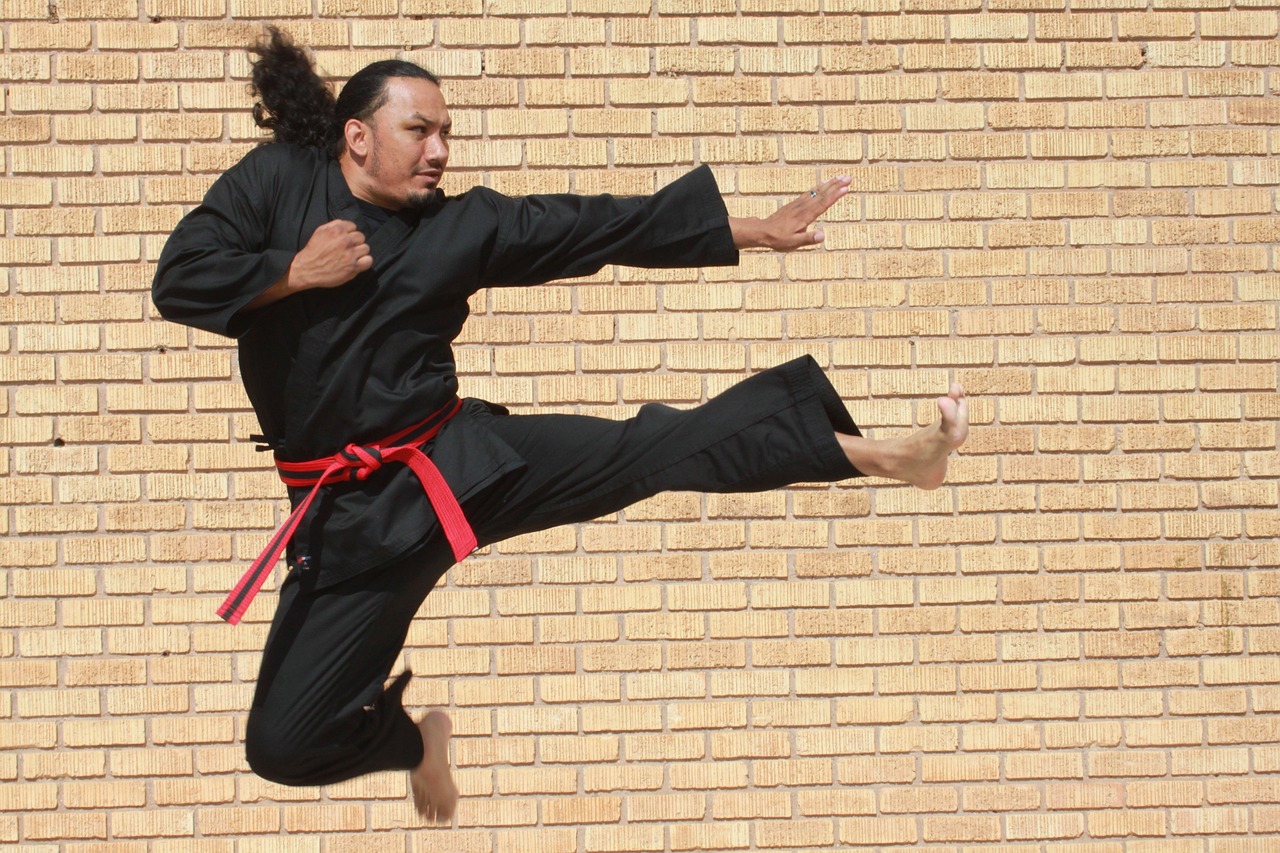Strategic Use Of The Roundhouse Kick” guides you through the dynamic potential of one of martial arts’ most iconic moves. You’ll discover how to effectively integrate the roundhouse kick into your training routine, enhancing your agility, power, and precision. This article delves into various techniques, timing, and strategic applications, ensuring that your roundhouse kick is not just powerful but also a game-changer in any confrontational scenario. Whether you’re a martial arts novice or a seasoned practitioner, you’ll gain valuable insights to elevate your skills and tactics. Have you ever wondered how to effectively incorporate the roundhouse kick into your martial arts arsenal? If so, you’re not alone. The roundhouse kick is a staple in many martial arts disciplines such as Taekwondo, Muay Thai, and Karate, known for its power and versatility. But merely knowing how to execute it isn’t enough; you need to understand the strategic use of the roundhouse kick to truly make it an invaluable part of your skill set.

Understanding the Roundhouse Kick
Before diving into the strategy, it’s essential to understand what a roundhouse kick is. This kick involves rotating your hips and body to swing your leg in a circular motion, delivering a powerful strike with either the shin or the instep of the foot. It’s often aimed at targets like the legs, body, or head, and can be executed from both the front and rear leg.
Basic Mechanics
The mechanical aspects of the roundhouse kick involve multiple steps:
- Pivoting: You must pivot on your supporting foot as you turn your hips and shoulders.
- Chambering: Your kicking leg should be chambered (bent) before you extend it in a circular motion.
- Striking Surface: The striking surface can vary depending on the desired effect—shin for power and instep for reach.
Understanding these mechanics can help you execute a more effective kick, but it’s the strategic application that will set you apart.
Setting Up the Roundhouse Kick
Successful execution often depends on the setup. You can’t just throw a roundhouse kick out of nowhere and expect it to work. You need to create openings and opportunities.
Feints and Fakes
Using feints and fakes can make your opponent commit to a defensive action, creating an opening for your roundhouse kick.
Feint Examples:
| Technique | Description |
|---|---|
| Jab Feint | A quick, non-committal jab that draws the opponent’s guard. |
| Fake Low Kick | Initiate a low kick, but pivot to a higher target. |
| Footwork Shuffle | Quick foot movements to disrupt your opponent’s timing. |
Combinations
Combining punches and other kicks can help set up your roundhouse kick. For instance, a jab-cross-hook can distract your opponent, creating an opening for a leg kick.
Effective Combinations:
| Combination | Description |
|---|---|
| Jab-Cross-Roundhouse | Use the jab-cross to get your opponent’s guard up, then throw a roundhouse. |
| Low Kick-High Kick | Attack the leg to lower the guard, followed by a high roundhouse. |
| Body Hook-Roundhouse | Dig a body hook to bring hands down, then swing a roundhouse kick high. |
Targeting
Knowing where to hit can make all the difference. The roundhouse kick can be targeted at various parts of the body, each with its specific strategic advantage.
Leg
Kicking the leg—especially the thigh—can slow down your opponent, reducing their mobility and power.
Advantages:
- Limits opponent’s movement
- Sets up further attacks
- Relatively low risk
Body
Aimed at the ribs or liver, body kicks can cause significant pain and even incapacitate an opponent if done correctly.
Advantages:
- High damage potential
- Opens up the upper body for subsequent attacks
- Can wind your opponent if aimed at the diaphragm
Head
High-risk but high-reward, a roundhouse kick to the head can end a fight instantly.
Advantages:
- Potential knockout
- Creates psychological pressure
- Crowd-pleasing technique in competitions
Defensive Applications
While typically thought of as an offensive weapon, the roundhouse kick also has defensive applications. Using it to halt an opponent’s advance or even counter-attack can be very effective.
Intercepting Kicks
Using a roundhouse kick to intercept an opponent’s attack can neutralize their offense and turn the momentum in your favor.
Techniques:
| Intercepting Technique | Description |
|---|---|
| Slip and Kick | Slip a punch and immediately throw a roundhouse to the opponent’s exposed side. |
| Parry and Kick | Parry a jab and follow up with a low roundhouse. |
Counter-Kicks
If your opponent throws a kick, you can counter with a roundhouse to catch them off guard.
Counter Examples:
| Counter Technique | Description |
|---|---|
| Counter Roundhouse (vs. Low Kick) | When your opponent kicks low, counter with a high roundhouse to the head. |
| Catch and Counter | Catch a body kick and follow up with a low roundhouse to the supporting leg. |

Conditioning and Drills
To effectively use the roundhouse kick, conditioning and practice are key. Drills can help improve your technique, speed, and accuracy.
Drills for Precision
Precision is vital for making the roundhouse kick effective. Use these drills to improve your accuracy:
| Drill | Description |
|---|---|
| Target Kicking | Use pads or markers to practice hitting specific targets at different heights and angles. |
| Mirror Drills | Practice your kicks in front of a mirror to ensure proper form and alignment. |
Drills for Power
Power can be everything in a fight. Use these drills to build the necessary strength.
| Drill | Description |
|---|---|
| Heavy Bag Work | Regular sessions on the heavy bag to build power and endurance in your kicks. |
| Resistance Bands | Use resistance bands while kicking to add an extra layer of difficulty. |
Mindset and Strategy
Physical conditioning and drills are fundamental, but mindset and strategic thinking are equally crucial. Understanding your opponent and adapting your strategy in real-time can be the difference between victory and defeat.
Psychological Warfare
Kicking isn’t just about the physical act; it’s also a psychological battle. A well-timed roundhouse kick can unsettle your opponent.
Tactics:
| Tactic | Description |
|---|---|
| Intimidation | A few hard, loud kicks can intimidate and pressure your opponent. |
| Confusion | Mix up your kicks to different levels to keep them guessing. |
Adaptability
Being able to adapt your strategy according to the situation is critical. You may need to adjust based on your opponent’s strengths and weaknesses.
Adaptive Strategies:
| Adaptation | Description |
|---|---|
| Switching Stance | If your opponent becomes accustomed to one side, switch stance for new angles. |
| Varying Speed | Sometimes slow, sometimes fast; keep your opponent from finding a rhythm. |
Reading Your Opponent
Understanding how and when to throw a roundhouse kick can be enhanced by reading your opponent’s actions and reactions.
Key Insights:
| Insight | Description |
|---|---|
| Guard Position | Watch how they guard different parts of their body to find openings. |
| Footwork | Observe their movement patterns to anticipate when and where to strike. |

Application in Different Martial Arts
The roundhouse kick is ubiquitous in martial arts, but its application can vary depending on the discipline. Here, we’ll briefly go over how it’s used in some popular martial arts.
Taekwondo
In Taekwondo, the roundhouse kick (known as dolio chagi) is often used with a snap for speed and point-scoring.
Focus:
| Aspect | Description |
|---|---|
| Speed | Emphasis on quick, snapping kicks for point-scoring. |
| Higher Flexibility | Often aimed at higher targets like the head to score more points. |
Muay Thai
Muay Thai utilizes the roundhouse kick (te chiang) with more focus on power, often striking with the shin.
Focus:
| Aspect | Description |
|---|---|
| Power | Generated from the entire body for devastating impact. |
| Shin Usage | Utilizing the hard surface of the shin for maximum damage. |
Karate
In Karate, the roundhouse kick (mawashi geri) is often executed with precision and controlled power, serving multiple purposes from sparring to self-defense.
Focus:
| Aspect | Description |
|---|---|
| Precision | Targeted strikes for effective self-defense and point-scoring. |
| Controlled Power | Emphasis on delivering power without sacrificing form. |
Common Mistakes and How to Avoid Them
Even experienced martial artists can make mistakes when executing a roundhouse kick. Avoid these common pitfalls to ensure you’re making the most of this powerful technique.
Dropping Hands
One common error is dropping your hands when you kick, which leaves you open to counters.
Solution:
Keep your hands up to protect your head and body, even when executing the kick.
Poor Pivot
Not pivoting enough on the supporting foot can reduce the power and range of your kick.
Solution:
Practice proper pivoting mechanics to ensure you’re getting the most out of your roundhouse kick.
Telegraphing
Telegraphing your kick makes it easier for your opponent to see it coming and defend against it.
Solution:
Work on disguising your kicks, using feints and fast transitions to keep your opponent guessing.
Safety and Precautions
Using the roundhouse kick effectively is not just about offense; it’s also about maintaining safety for both you and your sparring partner.
Warm-Up Routines
Always warm up before practicing kicks to avoid injuries.
Warm-Up Techniques:
| Technique | Description |
|---|---|
| Leg Swings | Gentle swings to loosen up the hips and legs. |
| Dynamic Stretching | Movements like lunges and leg circles to prepare the muscles. |
Protective Gear
Using the right protective gear can prevent injuries.
Essential Gear:
| Gear Type | Description |
|---|---|
| Shin Guards | Protects your shins from impact during sparring. |
| Mouth Guard | Prevents teeth and jaw injuries. |
Conclusion
The roundhouse kick is more than just a powerful technique; it’s a versatile tool that can be used in various strategic ways. By understanding its mechanics, setting it up effectively, targeting wisely, and practicing diligently, you can incorporate the roundhouse kick into your martial arts repertoire with great success. Remember, the key is not just in the kick itself, but in how, when, and why you use it. So take these insights, practice them, and watch your skills elevate to the next level.

